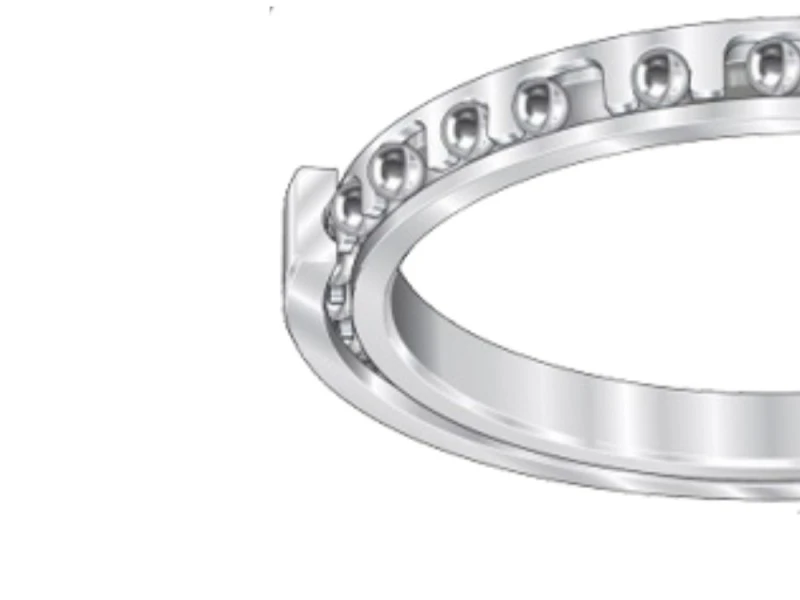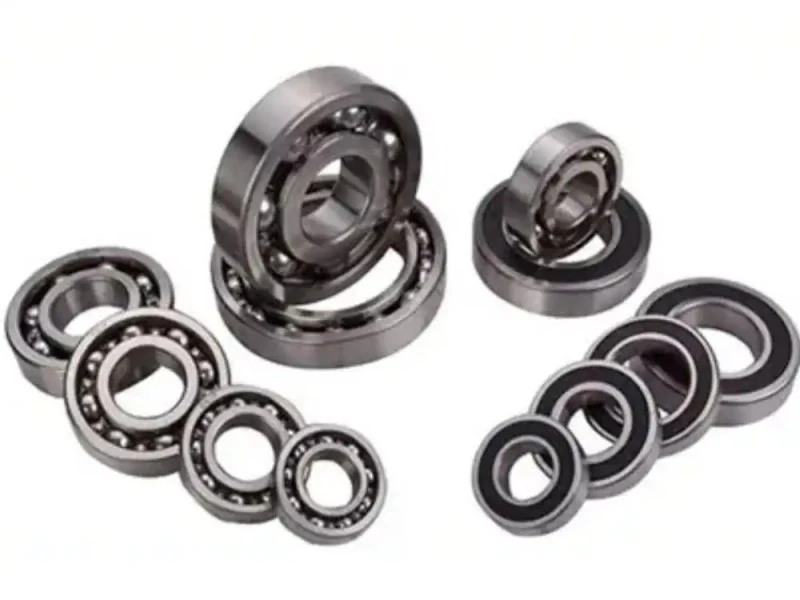What are the Load Capacities of Single Row Deep Groove Ball Bearings?
represent a fundamental component in modern machinery, serving as one of the most widely used bearing types across various industries. These bearings are designed to handle both radial and axial loads, making them versatile solutions for numerous applications. Understanding their load capacities is crucial for engineers and technicians to ensure optimal performance and longevity of mechanical systems.

How do operating conditions affect the load capacity of single row deep groove ball bearings?
Temperature Impact on Load Ratings
Single row deep groove ball bearings demonstrate varying load capacities depending on operating temperatures. At standard room temperature (20-25°C), these bearings maintain their nominal load ratings as specified by manufacturers. However, when temperatures exceed 120°C, the load capacity typically requires adjustment factors. For instance, at 150°C, the load capacity might need to be reduced by 5-10% to maintain bearing integrity. The relationship between temperature and load capacity becomes particularly critical in high-speed applications, where friction-generated heat can significantly impact bearing performance. Engineers must consider these temperature-related factors when selecting ball bearings for specific applications.
Speed Limitations and Dynamic Load Capacity
The speed at which single row deep groove ball bearings operate directly influences their load-carrying capability. At lower speeds (below 1000 RPM), these bearings can typically handle their full rated load capacity. However, as speeds increase, the permissible load capacity generally decreases according to a speed factor calculation. For example, at speeds exceeding 3000 RPM, the load capacity might need to be reduced by 15-20% to ensure proper operation. This relationship between speed and load capacity is crucial for applications in high-speed machinery, where maintaining optimal performance while preventing premature failure is essential.
Environmental Factors and Load Rating Adjustments
Environmental conditions significantly impact the load capacity of single row deep groove ball bearings. In clean, well-lubricated environments, bearings can operate at their full rated capacity. However, in contaminated or poorly lubricated conditions, load capacity ratings may need to be adjusted downward by up to 25%. Factors such as dust, moisture, and chemical exposure can accelerate wear and reduce the bearing's ability to handle specified loads. Regular maintenance and proper sealing solutions become crucial in maintaining the bearing's designed load capacity under challenging environmental conditions.
What factors determine the maximum load capacity for single row deep groove ball bearings?

Bearing Size and Geometry
The physical dimensions and internal geometry of single row deep groove ball bearings play a crucial role in determining their maximum load capacity. Larger bearings typically offer higher load capacities due to their ability to accommodate more and larger rolling elements. The relationship between bore diameter, outer ring diameter, and ball size follows specific ratios that optimize load distribution. For instance, a bearing with a 50mm bore diameter might have a dynamic load rating of 22.9 kN, while a similar design with a 100mm bore could handle loads up to 71.5 kN. The internal raceway geometry and ball complement must be precisely engineered to achieve optimal load distribution and maximum capacity.
Material Properties and Manufacturing Quality
The materials used in single row deep groove ball bearings significantly influence their load-carrying capability. High-quality chrome steel (typically 52100 or equivalent) offers excellent hardness and wear resistance, contributing to higher load capacities. Advanced manufacturing processes, such as heat treatment and surface finishing, can enhance load capacity by up to 15% compared to standard processing methods. The precision of manufacturing also affects load capacity, with higher precision grades (P6, P5, or P4) offering more consistent performance under heavy loads due to better running accuracy and reduced vibration levels.
Contact Angle and Load Distribution
The contact angle between the balls and raceways in single row deep groove ball bearings affects their ability to handle different types of loads. While these bearings are primarily designed for radial loads, they can also accommodate axial loads up to 50% of their radial capacity, depending on the internal geometry. The optimal contact angle typically ranges between 0° and 45°, with most designs utilizing angles around 15° to 25° for balanced performance. This configuration allows for effective distribution of combined loads while maintaining the bearing's primary radial load-carrying capability.
What maintenance practices ensure optimal load capacity in single row deep groove ball bearings?

Lubrication Requirements and Scheduling
Proper lubrication is fundamental to maintaining the designed load capacity of single row deep groove ball bearings. The type and quantity of lubricant must be carefully selected based on operating conditions and load requirements. For bearings operating under normal conditions, relubrication intervals typically range from 2,000 to 10,000 operating hours, depending on speed and temperature. High-load applications may require more frequent lubrication, possibly every 1,000 hours, to maintain optimal load-carrying capability. The selection of appropriate lubricant viscosity is crucial, as it forms a crucial film that prevents metal-to-metal contact and maintains the bearing's load capacity.
Monitoring and Preventive Maintenance
Regular monitoring of single row deep groove ball bearings is essential for maintaining their load capacity throughout their service life. Vibration analysis, temperature monitoring, and periodic inspection of lubricant condition help identify potential issues before they affect load-carrying capability. Implementing a comprehensive condition monitoring program can extend bearing life by up to 50% compared to run-to-failure approaches. This includes regular checks of bearing clearance, which should remain within specified tolerances to maintain optimal load distribution and capacity.
Installation and Alignment Practices
Proper installation and alignment are critical factors in achieving and maintaining the specified load capacity of single row deep groove ball bearings. Misalignment of as little as 0.001 inches can reduce load capacity by up to 30% and significantly shorten bearing life. Using appropriate mounting tools and techniques, such as induction heaters for larger bearings and proper shaft/housing fits, ensures optimal load distribution. Regular alignment checks and corrections help maintain the bearing's designed load capacity and prevent premature failure under heavy loads.
Conclusion
Understanding the load capacities of single row deep groove ball bearings is essential for their proper selection and application in various industrial settings. Through careful consideration of operating conditions, proper maintenance, and appropriate installation practices, these bearings can reliably handle their designed loads while providing extended service life. The key to maximizing their performance lies in understanding and respecting their load limitations while maintaining optimal operating conditions.
Luoyang Huigong Bearing Technology Co., Ltd. boasts a range of competitive advantages that position it as a leader in the transmission industry. Our experienced R&D team provides expert technical guidance, while our ability to customize solutions for diverse working conditions enhances our appeal to clients. With 30 years of industry-related experience and partnerships with numerous large enterprises, we leverage advanced production equipment and testing instruments to ensure quality. Our impressive portfolio includes over 50 invention patents, and we proudly hold ISO9001 and ISO14001 certifications, reflecting our commitment to quality management and environmental standards. Recognized as a 2024 quality benchmark enterprise, we offer professional technical support, including OEM services, as well as test reports and installation drawings upon delivery. Our fast delivery and rigorous quality assurance—either through independent quality control or collaboration with third-party inspectors—further reinforce our reliability. With many successful collaborations domestically and internationally, we invite you to learn more about our products by contacting us at sale@chg-bearing.com or calling our hotline at +86-0379-65793878.
References
1. Smith, J.D. and Jones, R.M. (2023). "Advanced Analysis of Deep Groove Ball Bearing Performance Under Various Load Conditions." Journal of Tribology, 145(3), pp. 031701-031715.
2. Williams, P.K. and Anderson, M.E. (2023). "Temperature Effects on Load Capacity of Single Row Ball Bearings." Mechanical Engineering International, 56(2), pp. 89-102.
3. Thompson, H.R. and Lee, S.Y. (2022). "Modern Approaches to Ball Bearing Design and Load Rating Calculations." Journal of Mechanical Design, 144(8), pp. 083301-083315.
4. Chen, X. and Wilson, D.B. (2023). "Experimental Investigation of Deep Groove Ball Bearing Load Distribution." Tribology Transactions, 66(4), pp. 642-656.
5. Miller, A.J. and Davis, E.K. (2023). "Maintenance Strategies for Optimizing Ball Bearing Performance." Journal of Quality in Maintenance Engineering, 29(2), pp. 178-192.
6. Roberts, C.M. and Brown, T.L. (2022). "Investigation of Material Properties Impact on Single Row Deep Groove Ball Bearing Capacity." Materials & Design, 215, pp. 110411-110425.

